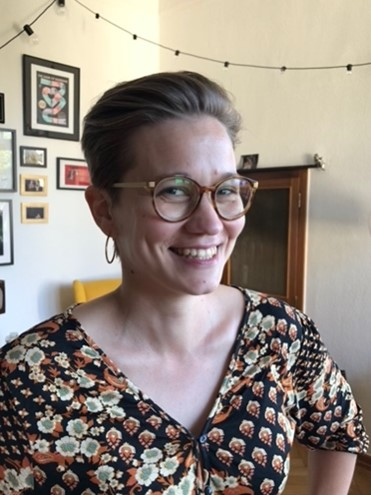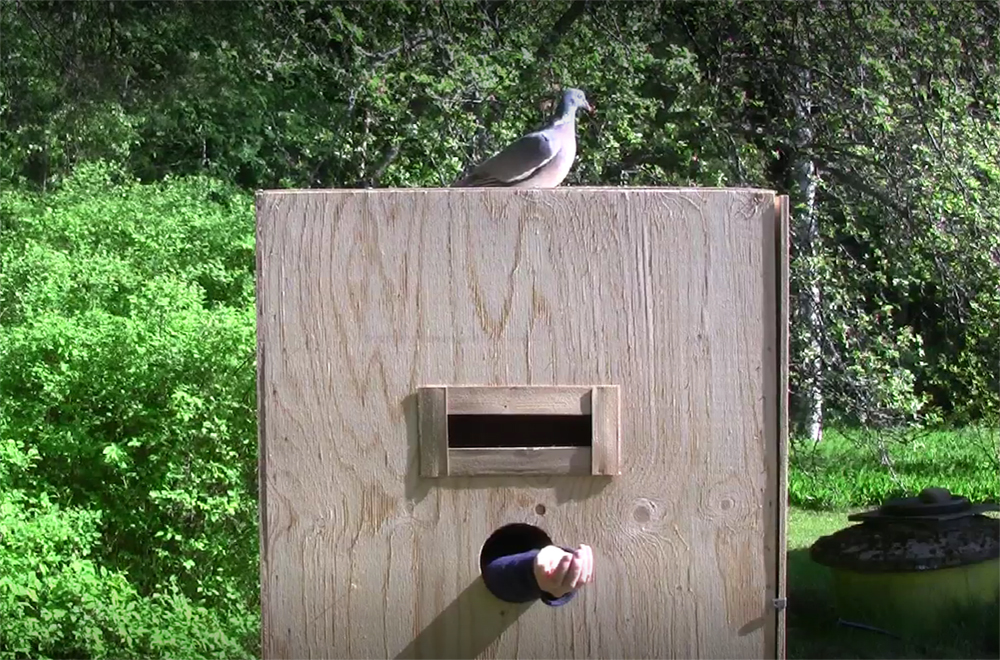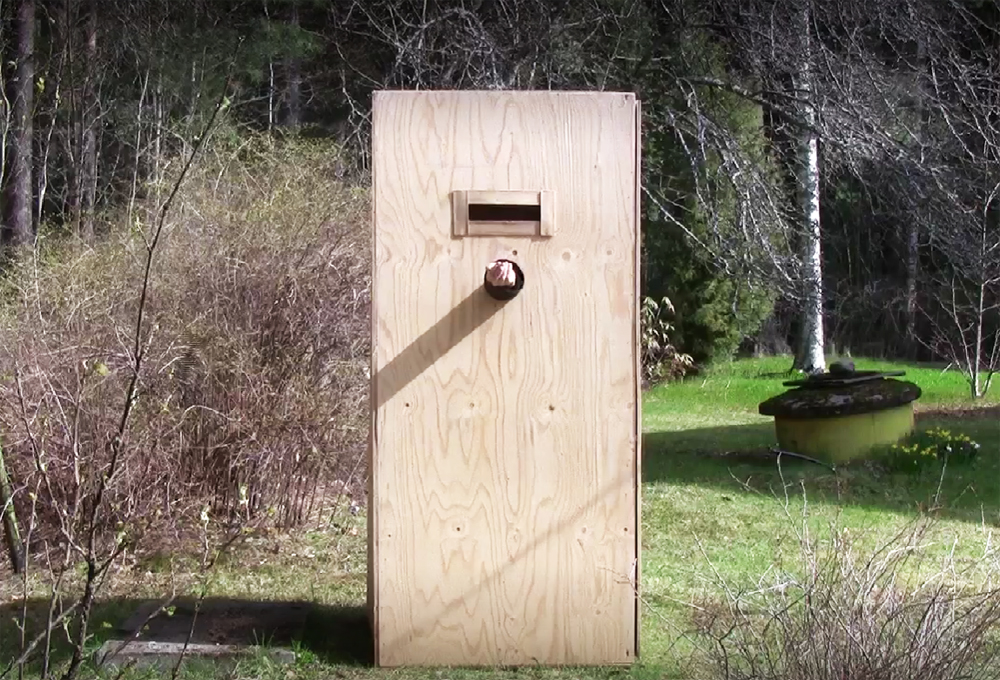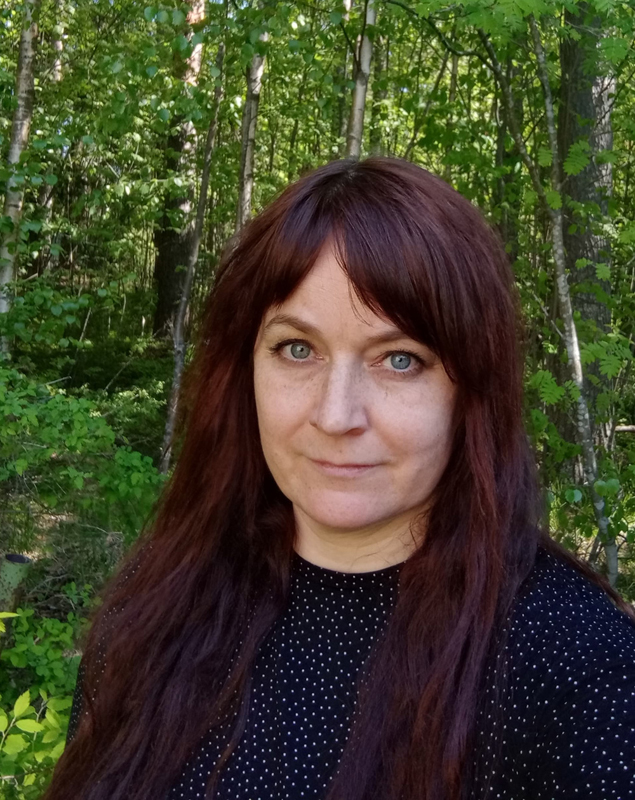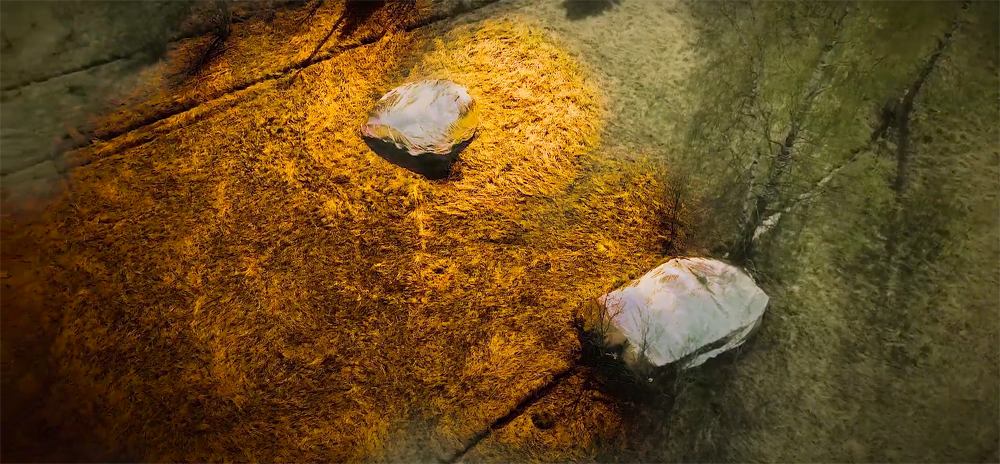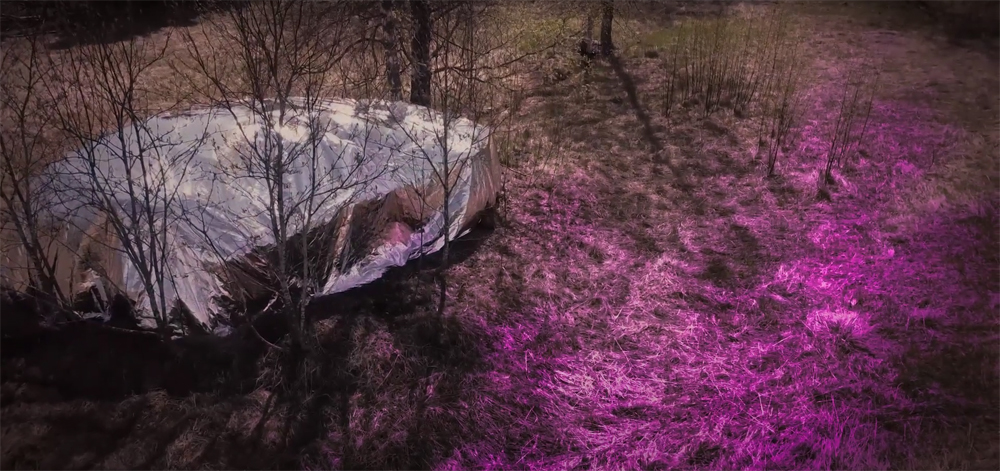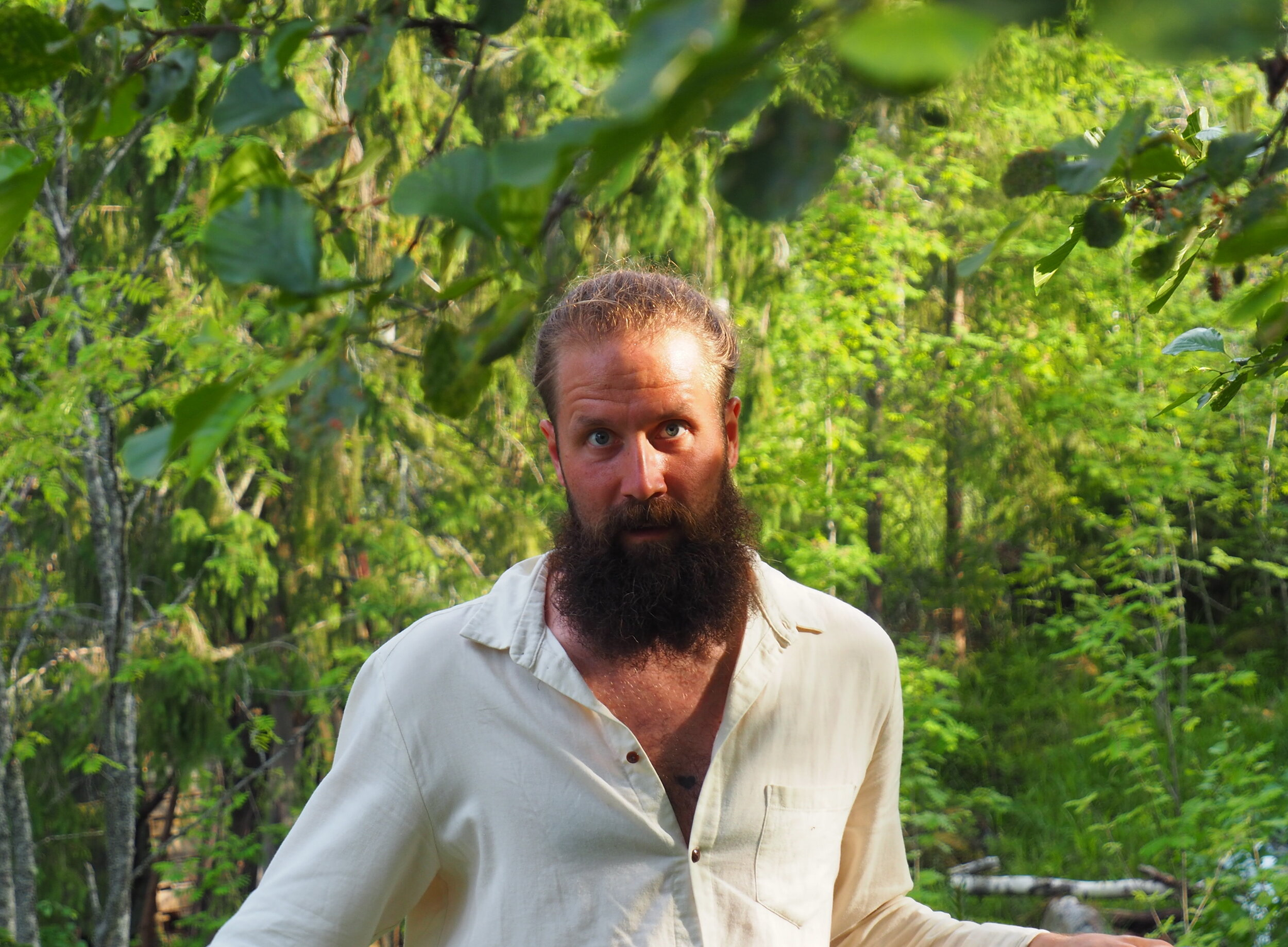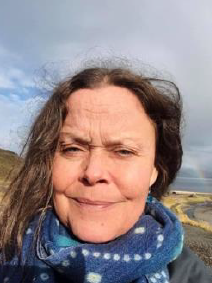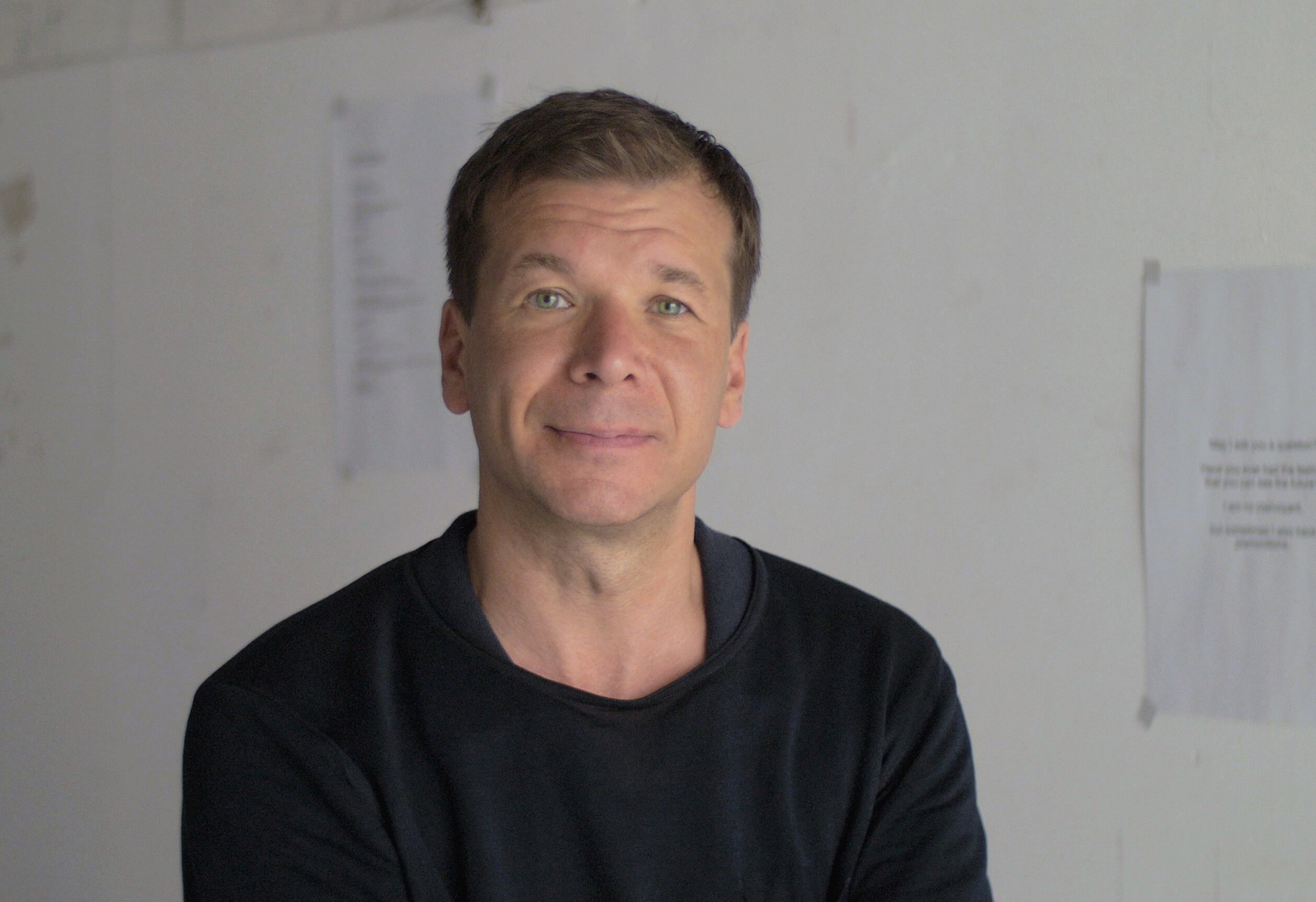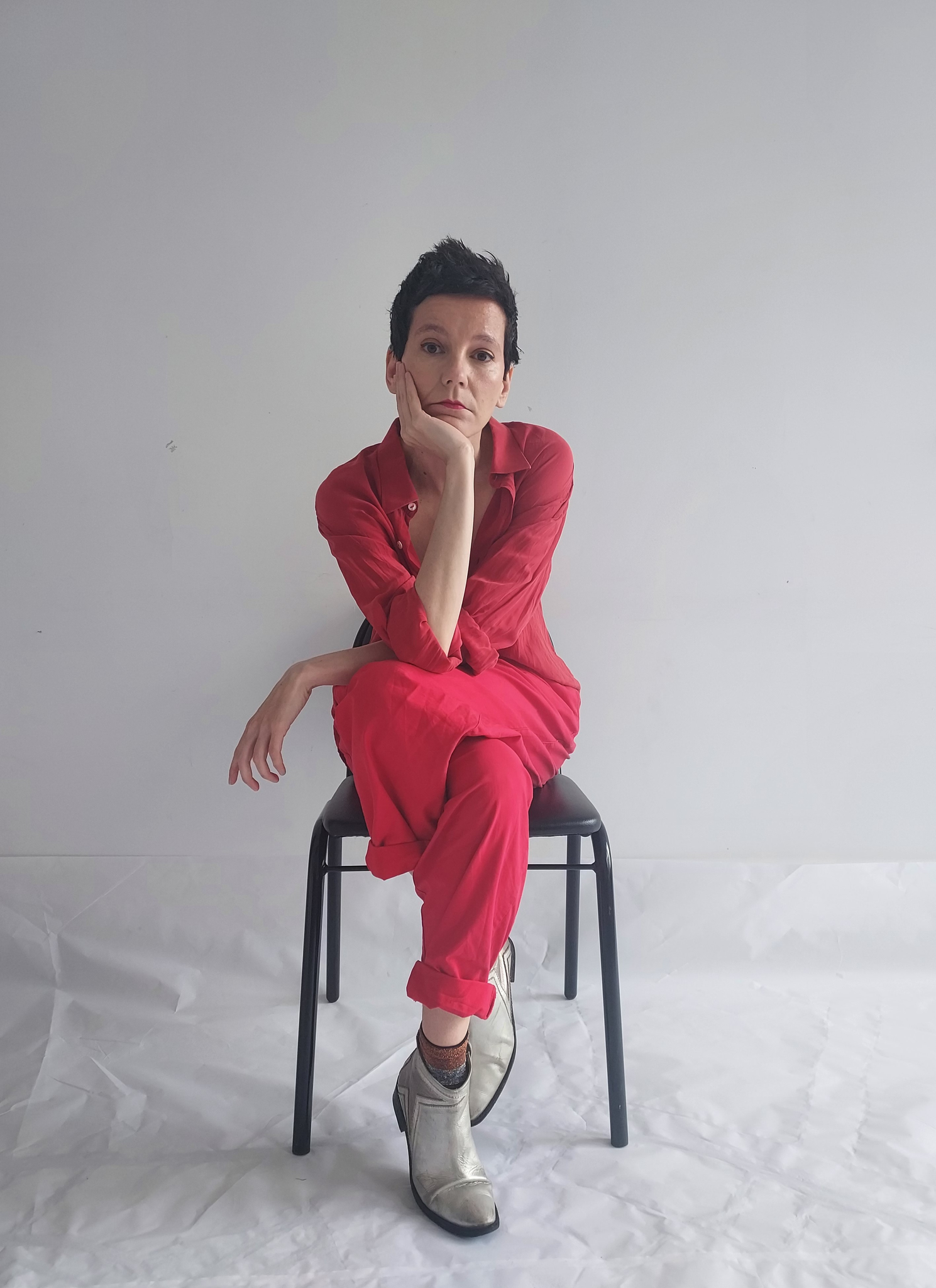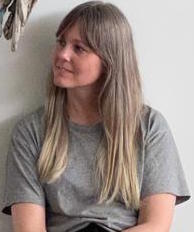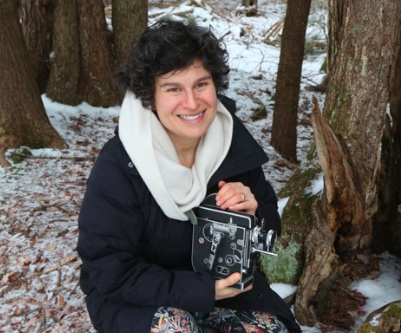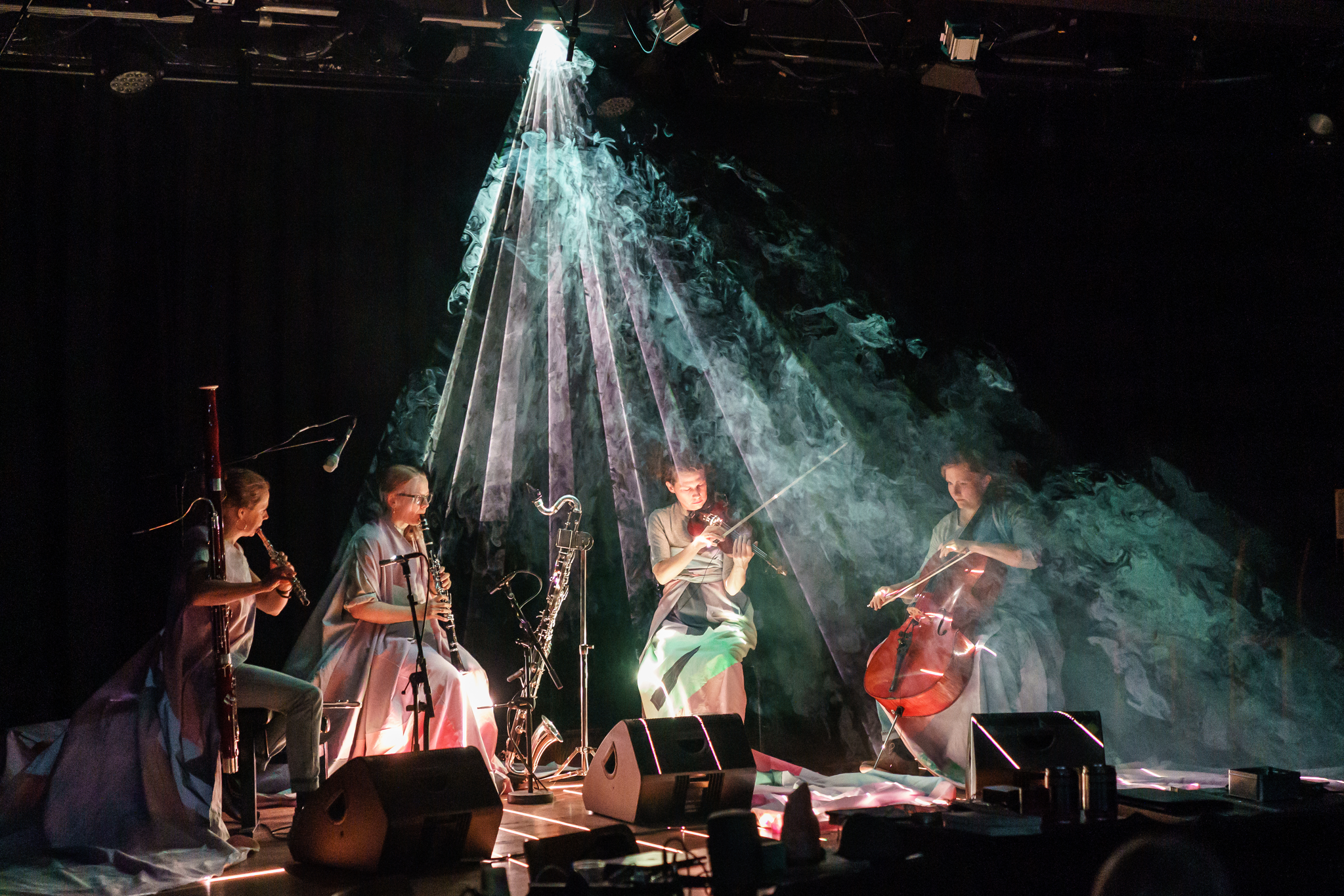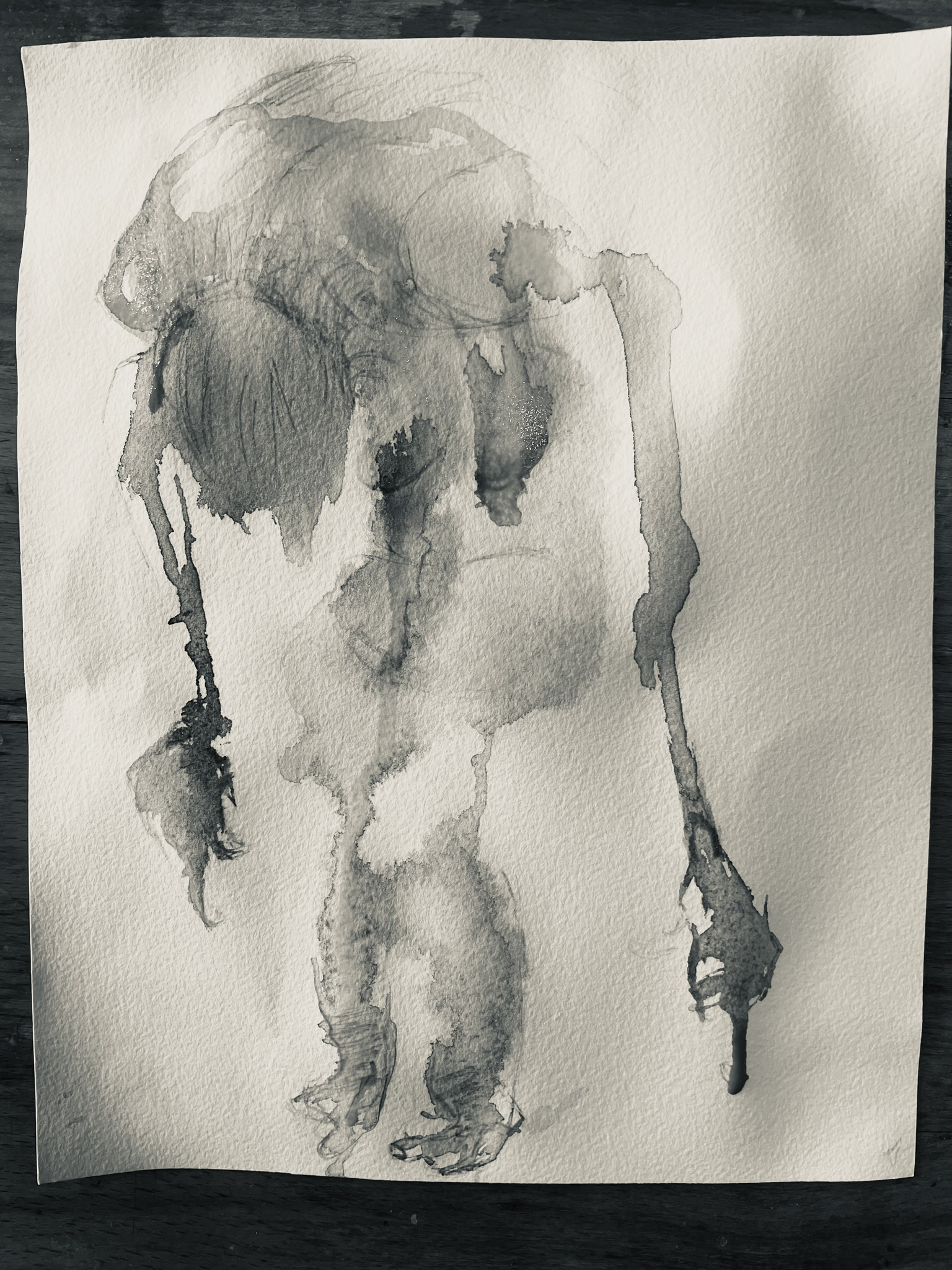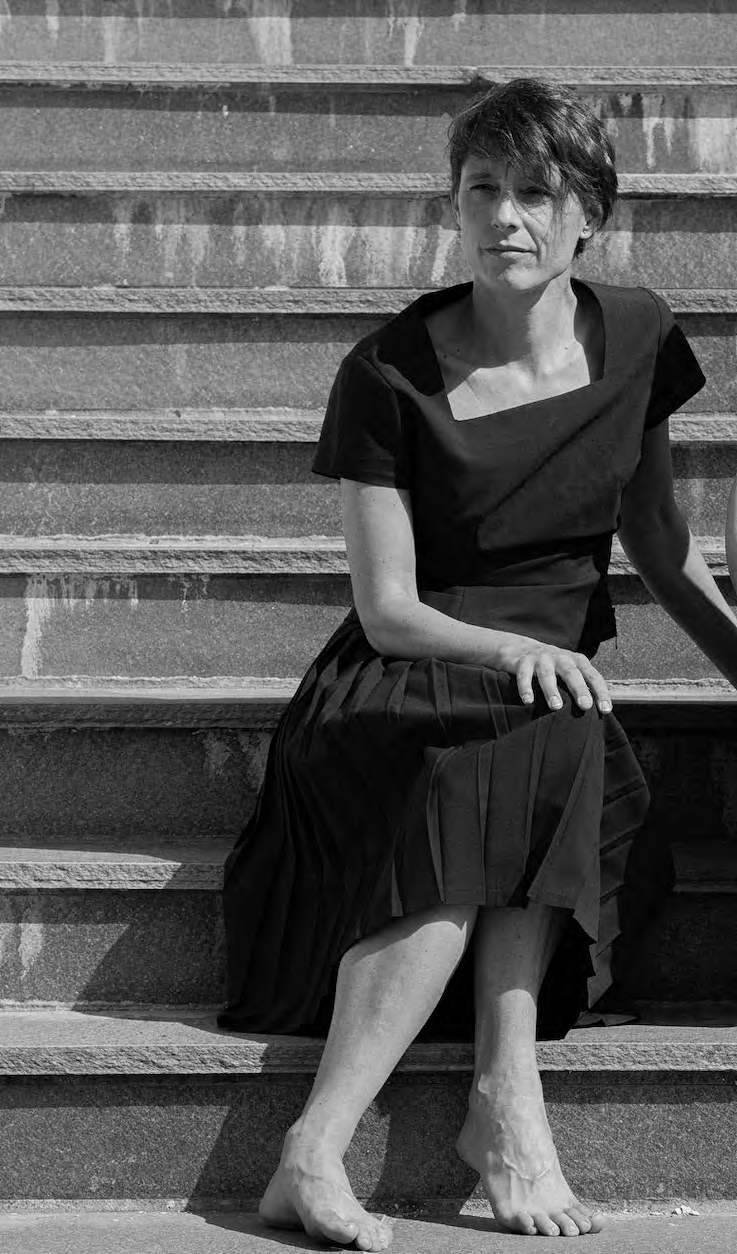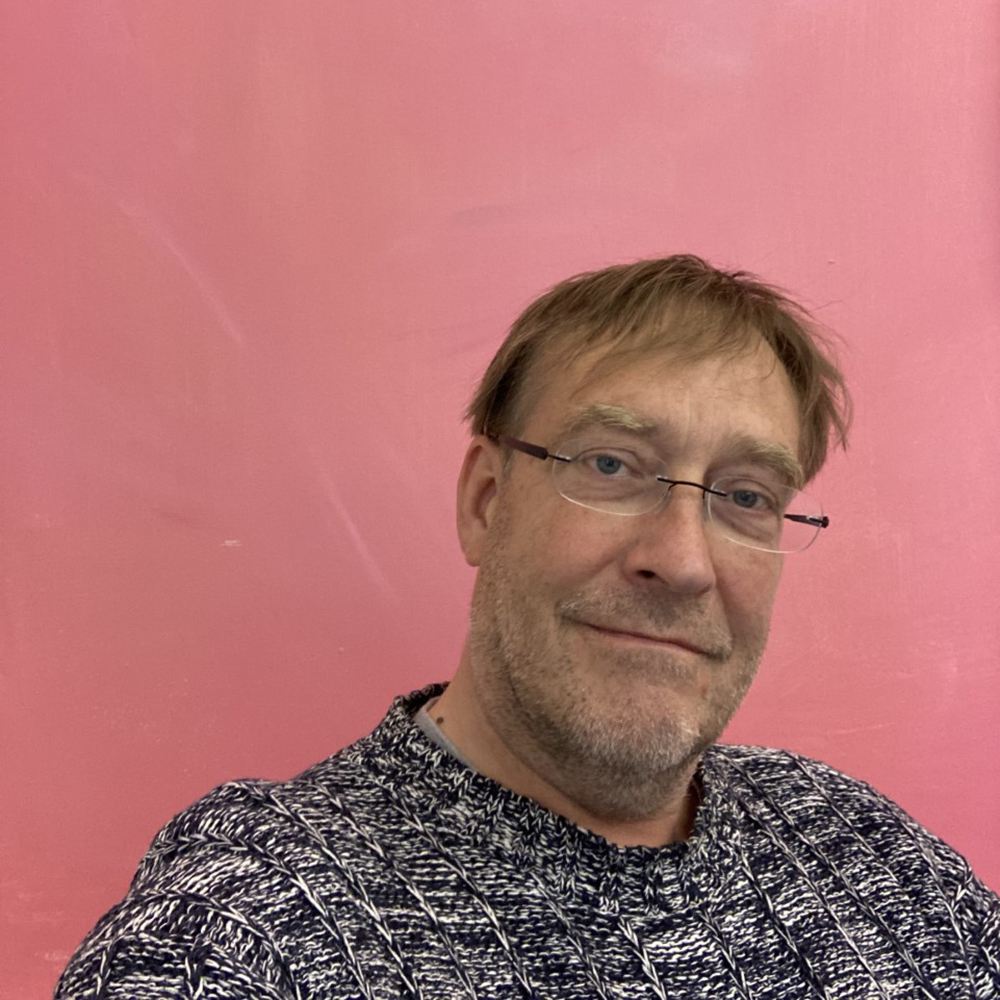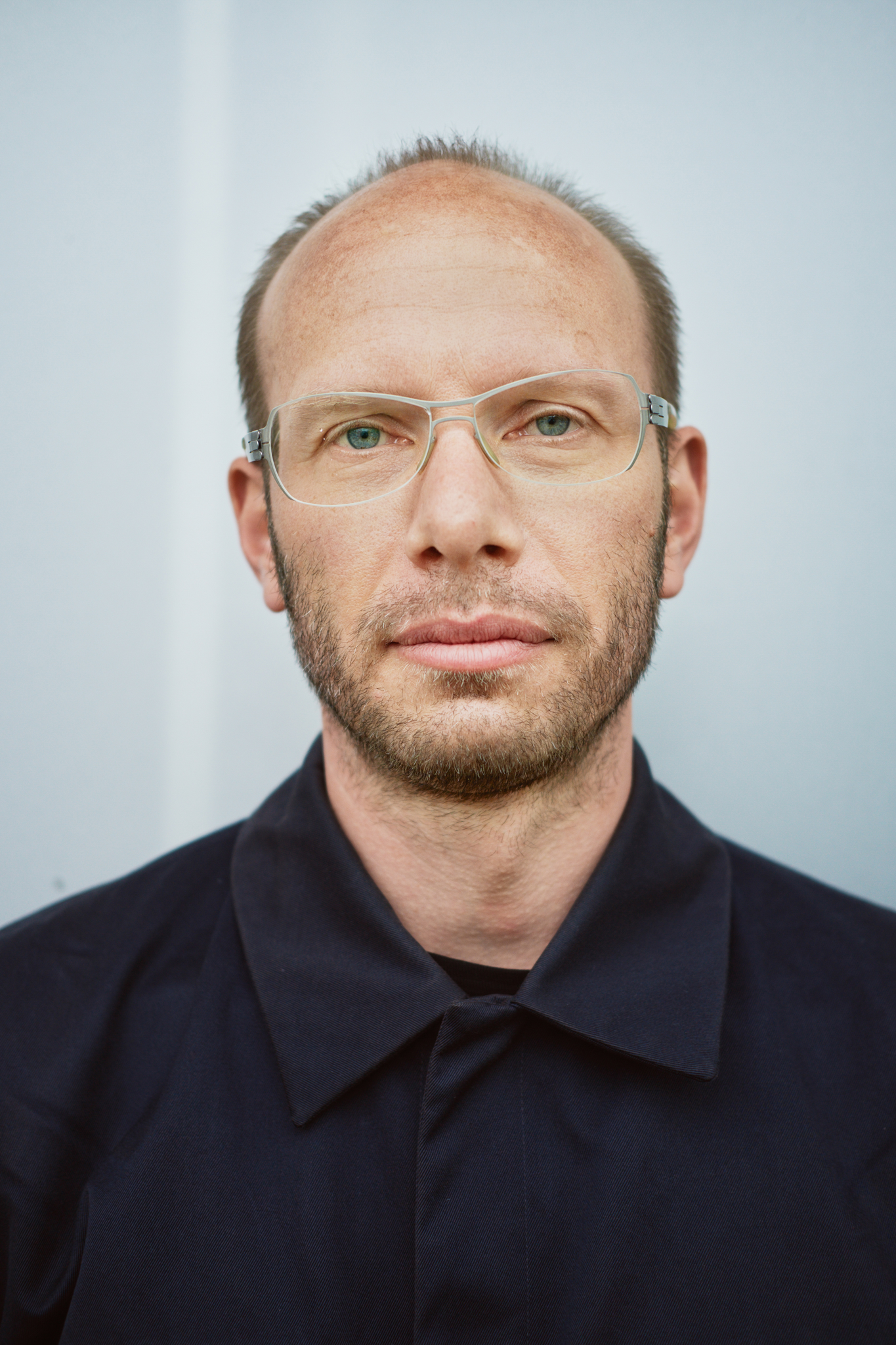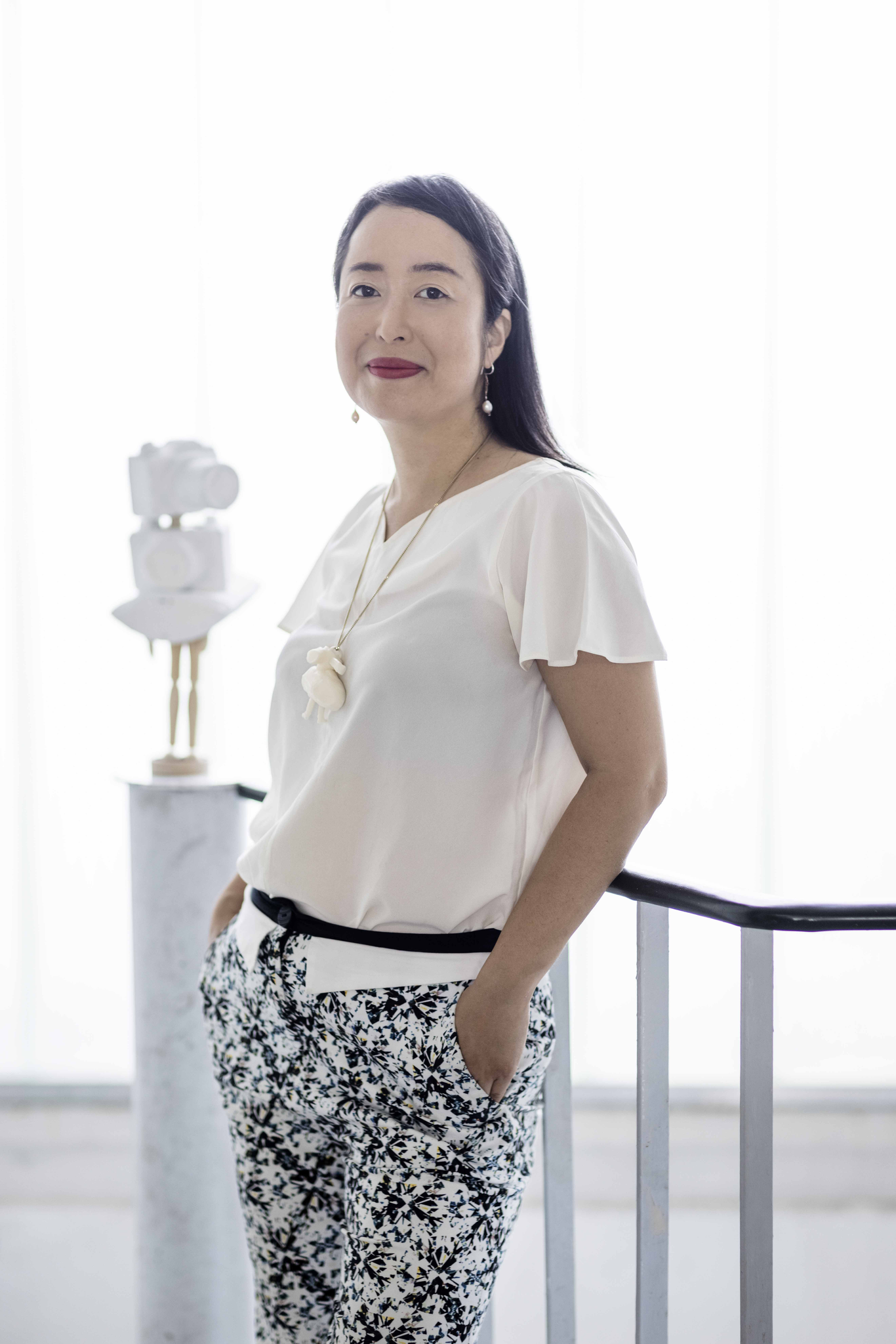FINLAND
Leena Julin / Sibelius Academy, Uniarts Helsinki
Maarit Rankanen / Theatre Academy, Uniarts Helsink
Veli Lehtovaara / Theatre Academy, Uniarts Helsinki
Heini Nieminen / Academy of Fine Arts, Uniarts Helsinki
Miklos Gaál / Academy of Fine Arts, Uniarts Helsinki
Antti Nyyssölä / Academy of Fine Arts, Uniarts Helsinki
NORWAY
Jenny Perlin / Oslo National Academy of the Arts, Academy of Fine Art
Ingvild Rømo Grande / Norwegian University of Science and Technology, Department of Art and Media Studies
Sasa Asentic / Oslo National Academy of the Arts, Art and Craft
Karolin Tampere / UiT The Arctic University of Norway, Academy og Arts
Eira Bjørnstad Foss / Norwegian University of Science and Technology, Department of Music
SWEDEN
Maipelo Gabang / Uniarts Stockholm, Department of Dance
Marcia Nemer / Uniarts Stockholm, Department of Acting
Caterina Mora /Uniarts Stockholm, Department of Dance
Iury Salustiano Trojaborg / Lund University, Malmö Theatre Academy
Tanja Hylling Diers / Lund University, Malmö Theatre Academy
Nkule Mabaso / University of Gothenburg, The Crafts and Fine Art Unit
Angeliki Dimaki-Adolfsen / University of Gothenburg, The Design Unit
Thiago de Paula Souza / University of Gothenburg, The Crafts and Fine Art Unit
FINLAND
Mika Elo / Professor, Academy of Fine Arts, Uniarts Helsinki
Pauliina Syrjälä / Lecturer, Folk music, Sibelius Academy, Uniarts Helsinki
Pilvi Porkola / Lecturer, Theatre Pedagogy, Theatre Academy, Uniarts Helsinki
NORWAY
Yuka Oyama / Professor of Craft (Jewellery Art) at the University of Gothenburg, Sweden
Lotte Mik-Meyer / Professor, The Norwegian Film School, Inland Norway University of Applied Sciences
Solmund Nystabakk / Lecturer, Academy of Music, UiT The Arctic University of Norway
Tao Sambolec / Artist and researcher
Linda Lien / Senior adviser, Norwegian Directorate for Higher Education and Skills
SWEDEN
Sofie Lebech / Lecturer, Malmö Theatre Academy, Lund University
Research abstract: Leena Julin is researching the connection – or lack of it – between Christian tradition and human life, studying both the content and form of the tradition. The research focuses on religious language mirroring being human, and the connection between religious habits and lived life. Julin is trying to find, show and bring into discussion recognizable and non-recognizable aspects of religion and religiousness with art (music, sound art, art installations) as the medium.
Julin is currently finishing the second year of her doctorate and the further the research proceeds, the more it finds similarities in also non-music-related artistic practices. This concerns both the practical implementations as well as the thinking behind the research. Julin approaches the research topics from viewpoints of the tradition itself, religion-philosophical and psychoanalytical framing, and practical life of today.
This brings her work also to relate to this year’s theme time/tid/aika through questions like unchanging and changing elements in humanity; the meaning of tradition, i.e., something that remains the same throughout times; the idea of linear time and its relation to eternity; limits of life, or more bluntly: what does death mean to life.
Church music is rarely seen as anything else but as devotional music serving the denomination it is linked to. Julin is however interested in widening the definition of church music to also non-devotional music that can observe, comment, and even criticize the church and religion, if needed.
Leena Julin: DocMus Doctoral School of Music, Sibelius Academy, the University of the Arts, Helsinki.
Having a master’s degree in both music and theology, Leena Julin is combining her expertise as a composer of investigatory music. She is especially interested in the human mind and religiousness. Julin is currently doing artistic research as a doctoral candidate at the DocMus Doctoral School of Music (Sibelius Academy, the University of the Arts, Helsinki). Julin is also a member of the activist music research association Suoni ry., and a board member in the Church music composers’ association in Finland.
Prior to her doctorate studies, Julin has combined art and research in an activist art project “Hate speech in the name of God” which used art and in specific church music to bring injustice into discussion in the context of religious circles. The starting point was the discussion concerning LGBTIQ+ minorities and their rights in the church and in the society. Julin collected speeches, comments and feedback said and written in the (ev. luth.) church of Finland regarding sexual and gender minorities, organized the texts according to reoccurring themes and used them as lyrics, composingsix pieces in ”iconic” church music styles. The pieces were published as music videos during Helsinki Pride 2020. Contact: leena.julin@uniarts.fi
WHO CARES? – an attempt at an embodied practice of caring and listening
Research abstract: The aim with this research project is to produce knowledge that can contribute to a deeper understanding of how we as artists in the performing arts can work with diverse groups of people, especially vulnerable groups on the margins of society who often have no voice to express opinions and experiences. My main interest is how to develop my artistic practice with practices such as deep listening, care-full listening and slow listening, as well as curatorial strategies in a deep, slow and ethically-conscious development process.
Tanja Hylling Diers is a Copenhagen and Malmö based theatre maker, dramaturge and curator with a broad practice that ranges widely from performance to post-dramatic theatre, from opera to experimental music and from street performance to contemporary dance. She is Ph.d-student at Lund University, Malmö Theatre Academy with a project that investigates how practices of listening and care can contribute to new knowledge in theatre productions centered around marginalized people within a documentary performing arts context from a dramaturgical perspective. Sh has e MA from Copenhagen University in Theatre and Performance Studies from 2011 and since then she has worked at the theatre Sort/Hvid as dramaturg and international coordinator from 2011 to 2017. From 2017 she has worked freelance with among other the Danish company Fix&Foxy and the Greek company ODC.
Research abstract: I am an immigrant who has the possibility to be a legal migrant. My body produces Conflicted Embodiment as a device to expose the violent confrontation determined by territory, patriarchal art systems, colonial silenced trauma, and resistant feminist hope. Combining different dance traditions, I seek in the contamination generated by mashing-up, ways of representing academic dance and “world dance”.
Inquiring into entertainment as research, this project uses Conflicted Embodiment as a way to address simultaneous creation, exposition and the documentation of the practice of “bastard-cheap” lecture-performances and the pedagogical approach of sharing.
Current research interests:
- How Embodied Conflict can be used to highlight, question and resist colonial history?
- Could it be the operation of synthesis in Conflicted Embodiment a gesture of resistance in colonialism and neoliberal capitalism context?
- How to develop an artistic-research device that questions and resists the concept of “art-work” or “art-piece”?
A list of links related to this research:
- About Transversal Research Training: https://apass.be/profile/filter-trt-transversal-research-training/
- About Tango Termique: https://caterinamora.jimdofree.com/what-embodying/transversal-research-training/tang-termique/
- About performing, visibility and redistribution: https://www.workspacebrussels.be/en/projects/dances-in-little-format
- Glimpses from physical practice (scroll down to arrive at the videos) https://apass.be/profile/3rd-block/
- Translated article by caterina written by Moira Millán about cultural appropriation and extractivism: https://cuadernosdedanza.com.ar/textosdanzacontemporanea/602/cultural-extractivism-is-the-subtraction-of-an-ancestral-knowledge-or-an-art-to-destroying-it
- Group exposition done in the frame of the On Mother Tongues I workshop, Stockholm: https://www.researchcatalogue.net/view/1770609/1770610
Caterina Daniela Mora Jara: Performing artist, teacher.
She comes from Fiske Menuco (the Argentine Republic) and from the Rucapillán Volcano (Republic of Chile). She lived in Balvanera and Almagro (Buenos Aires). She currently lives in the Ixelles neighbourhood (Brussels, Kingdom of Belgium) and in Alby Norsborg (Stockholm, Kingdom of Sweden).
She is trained in academic dance and folkloric dance and her work aims to problematize the modes of production and colonial legacy in representation of Western dance. She aims to promote dance as an inter-relational apparatus for the confrontation with others. She stands for formal education and public institutions. Her pedagogical approach uses intimacy as procedure and explores translation as transgression.
She is undertaking a PhD at SKH Uniarts, at the Department of Dance. She holds a Postmaster’s, Master’s and Bachelor’s degrees. She does perreo on her own, she also dances tango and sails a boat. She doesn’t have any Instagram account and never walked into an IKEA store.
Research Abstract: My research project is situated in the field of choreography, my approach to this field is to primarily meet with, understand and communicate to and with the world from the socio-political position, experience, and perspective of a racialised-migrant woman from Southern Africa. My current working definition of choreography is the ‘sequencing and organising of structures and people in societies’. Therefore, my work is in interested in embodiment as it relates to the organising and sequencing of society, built environments and the relational. The methods and strategies that help articulate my artistic enquiry flirt with but often step beyond dance-centric expression and processes by making use of participatory strategies, visual and sound arts exposition methods.
A current research interest lies within exploring the intervention of digital technology on the articulation, processing and audience experience of the project’s meaning making capabilities and ability to cause a shift in behaviour/perceptions in its afterlife.
Additionally, the project is currently geared towards analysing and communicating the teaching, learning, and working conditions of Black researchers in academia/arts education. What are the some of the methods and strategies that Black researchers, in predominantly white and euro-centric contexts, employ to sustain and advocate for not only their research but for themselves. What are the consequences of tokenism, institutional diversity and inclusion cosplay on the functionality and well-being of Black researchers. What effects does the shallow claims of internationalisation have on those who rely on their bodies to survive?
Maipelo Gabang is an artistic researcher, performer, and educator whose educational background includes a B.A in Drama and Organisational Psychology and an MA in Choreography and Movement Research from Rhodes University (South Africa). Maipelo is currently embarking on her Doctoral studies at the Stockholm University of the Arts (Sweden).
Research abstract: My research addresses fine arts as (re)presenter, research tool and a potential solver of environmental problems. My main focus is on artification of knowledge, how knowledge translates into art and is conveyed as art. What are the possibilities of art and science collaboration? How and in what extent art can function as a research tool for science and the tools of science function as research methods for art? The goal is to understand the meaning and possibilities of art in the era of ecological crises. How can art be used not only to highlight problems and contradictions, but also to look for means, ways, methods, tools, collaborations in which art can be a part of preventing the escalation of environmental problems.
My artistic part is formed around three main themes Air, Sea and Land, which I’m currently working on. The subthemes of Land are city animals and mining industry (extractivism). Time is an important factor in my work especially when working with animals/nature. I need to consider time from few different perspectives. The duration of the artistic process and it’s relation to the site and documentation are key elements in my work. Long-term time span gives the work a possibility to “happen” or “adapt” to it’s site. My work is dependent on the seasonal changes, the natural life, migration and nesting of birds. Certain phases of work need to take place in certain time. So, time is definitely a concrete factor to keep in mind but when to proceed and when to have patience?
Heini Nieminen is a doctoral candidate in Academy of Fine Arts, University of the Arts Helsinki. She lives and works in Kotka, Finland. Her background is in sculpture and environmental art. Nieminen often addresses contemporary ecological issues in a form of installations. She is interested in the dynamics of individual, community and the environment. Her motives derive from the need to bring notice to humankind’s exploitation of nature and global consumer culture and to the disengagement of humans from their natural environment. Nieminen works also actively as an artist duo Elin&Keino with Sandra Nyberg in the field of environmental art. Nieminen’s and Elin&Keino’s works have been exhibited nationally and internationally in outdoor exhibitions and art events such as Land Art Mongolia, Andorra Land’Art21, Andorra, Sculpture by the Sea Bondi, Australia, Eldorado, Lille3000, France, OpenART, Örebro, Sweden, Ecoismi, Contemporary Art Event, Milano, Italy and Headland Sculpture on the Gulf, Auckland, New-Zealand.
Research Abstract: How effective is it to tackle the concept of sustainability within the European performing arts context, without also dealing with the burden of Europe’s colonial past, focusing on narratives produced in liminal zones, the in-between spaces? My doctoral research project On Ancestrality and Regeneration: Performing Decolonial Journeys aims to investigate ways of using performance art as a regenerative and socio-political tool to provoke change in the understanding of the lives of immigrants who, like me, willingly travelled the old colonial routes back to the European countries that colonised ours. It aims to explore the process of construction of cultural identities in a performative setting according to the intersection of gender, sexuality, class, race and ableism, promoting in this way an active dialogue with the ecologies where this research will take place: Malmö, SE; Copenhagen, DK, Rio de Janeiro and Belém, BR .
Some questions I intend to pose:
- How can this research acknowledge individual ways of seeing, and value multiple perspectives on anti-colonial artistic practices?
- How can performance art be used as a tool to refigure power relations, regenerating, emancipating the victims of discrimination, creating, in this way, more just and equitable living conditions in accordance with the 2030 Agenda's view of a world of universal respect for human rights and human dignity, the rule of law, justice, equality and non-discrimination?
Iury Salustiano Trojaborg, PhD candidate, Malmö Theatre Academy/ Lund University: I am an artist researcher who has worked practically and theoretically in Theatre, Performance, Dance and Opera in different environments and roles, including actor, performer, writer, director and dramaturge in Brazil, Germany, Denmark, Poland and Sweden. I am currently a doctoral candidate at Malmö Theatre Academy and also a member of the Agenda 2030 Graduate School at Lund University.
My current practice as an artist researcher is a consequence of the different educational paths I followed by undertaking a Bachelor degree in Acting at the Federal University of the State of Rio de Janeiro and a Masters in Dramaturgy at the Goethe Universität in Frankfurt am Main and at the University of Copenhagen. Those paths are very much informed by a desire of not belonging to rigid epistemological structures and by an attempt to investigate methodologies that contemplate the performative as an arena to deal with the crossing of specific issues related to gender, sexuality, racialization, class and ableism, present in my body and in its relation to the different societies (in Brazil, in the Middle East and in northern Europe) that I have inhabited throughout my life. I understand the performative as a possibility to generate knowledge through the body and via its interaction with other agents. By making use of autoethnography as both a dramaturgical methodology and a performative tool, I am searching for ways to dramatize and, in this way, re-tell my own and some of my ancestors’ journeys. I deposit my belief in the iterative power of performance as means to emancipate and to regenerate those involved in such processes.
Nature Untitled: Ecological Poetics in Choreographic Writing
Research abstract: In my doctoral artistic research project I investigate the emergence, perception and articulation of ecological poetics in and through choreographic writing. I approach ecological poetics as a post-humanist and transdiciplinary concept that is applicable in thinking of the relationships between human and nonhuman in artistic practice. I refer here to Gary Wolfe’s argumentation in his book Ecological Poetics - or Wallace Stevens's Birds (2020). By the notion of choreographic writing I refer to an instruction, prescription, spell, recipe, code, score or script formed from natural language, images, numbers and diagrams, which the dancer embodies and transforms into action when performing for the audience in a certain place and time. In the course of research I ask what ecological poetics in choreographic writing is and how does it transmit as corporeal, linguistic and performative event on stage? Furthermore, I investigate choreographic writing as a structure for thinking between theoretical discourse and the event of performance, its corporeality and immediacy. Through practice orientated artistic processes I ask how ecological poetics emerge between performing bodies, diverse environments, literary sources, constructed stages, and dance that inhabits them. I apply choreographic writing as an artistic method to both create and scrutinise these relations and dynamics. The objective is to develop and communicate choreographic writing as an artistic practice, which is able to address and think ecological problems from its own perspectives and with specific technics. In the later phase, I will experiment on engaging choreographic thought and practice in the inter-artistic debate about ecological poetics, corporeality and the stage. By entering into dialogue with other art forms I will explore the edges of choreography, which in the field of ecology are known as the origin of diversity. Research consists three artistic parts and a commentary. The first artistic part Nature Untitled | Movements I-III (2022-23) is a choreographic installation and site-sensitive triptych. The choreography of each movement is written and performed in relation to a different place and environment. The doctoral research takes place 2021-2027 at Theatre Academy, University of the Arts Helsinki, Finland.
Veli Lehtovaara (www.spacetimelove.com) is a Finnish choreographer, performer and researcher working extensively on the field of dance and experimental theater. He lived and worked in Belgium for ten years 2008-2018. His is works have been presented in central venues and festivals in Europe as well as in South- and North America. Lehtovaara often works in a highly collaborative manner and combines elements from multiple disciplines in his choreographic practice. His creations vary from stage work to film and performance-installations. From 2015 onwards his work has been focused on interstices for ecological thinking, choreographic practice and diversity of corporealities. In 2022 Lehtovaara premiered a choreographic installation piece Nature Untitled | Movements I-III at Moving in November-festival and Zodiak-Center for New Dance. The triptych was realised in collaboration with visual artist Eija-Liisa Ahtila and sound artist Jani Hietanen together with a high profile group of performers and designers from five different countries. Currently Lehtovaara is conducting his artistic doctoral research project Ecological Poetics in Choreographic Writing (2021-2026) at the University of the Arts Helsinki. He has been working consistently as a mentor, teacher, assessor and adviser for the bachelor and master programs in dance art at Helsinki Theater Academy.
Aesthetics of access and politics of memory
Research abstract: My research project takes place in the context of the MEMORYWORK project at the KHiO. MEMORYWORK is a platform for sharing interdisciplinary artistic research on performative memory work. During my 3-year tenure I plan to develop further broad accessibility provision in my artistic practice that informs aesthetics of access. The key question that I would like to examine through my PhD artistic research proposal is: • How can aesthetics of access create new memory and change the affective states from which we perceive and remember the past and hence understand the world around us? To examine this question, I plan to work through the medium of performance with the focus on memories that belong to my family and neighbors in Bosnia related to the lived experience of different forms of oppression and exploitation in the period from 1942 until 2022. Philosopher and queer theoretician Jasbir K. Puar writes that “the production of much of the world’s disability happens through colonial violence, developmentalism, war, occupation and the disparity of resources.”1 Puar also makes a difference between disability, as a political identity, and debility, as a process of repeated exposer to harm and violence which affect body and mind in a course of one’s life. This difference and the relation between these two terms are relevant for my approach to memory work. I am interested in examining the relation between the oppression and exploitation and continuous harm and violence that was inflicted on bodies and minds of my family members and neighbors as a process of debilitation. These memories are also part of my lived experience and heritage. I plan to organize my research through three interconnected phases where the work on past memory will be used as a basic material and narrative source for the practice of artistic exploration of new performance formats and models of creative work based on accessibility. Accessibility in this process will be taken as the main principle and material condition of work that will allow the aesthetics of access to emerge and to create new memories of solidarity, anti-discrimination, and social justice. During the research, as a nondisabled artist and cultural activist with 25 years of antiableist practice in performing arts, I also plan to reflect upon the critical potential of aesthetics of access in creation of new memory and new social facts, as well as to reflect further on the role and accountability that artist as a worker in public have in building anti-discriminatory, inclusive, and accessible structures in dance and performance. 1 Jasbir K. Puar, The Right to Maim, preface: Hands up, Don’t Shoot! xix
Saša Asentić / Pronounced: Saʃa Asentitʃ / Pronouns: he/him/his: Saša Asentić is a choreographer and cultural worker. He was born in former Yugoslavia. During the war in Bosnia, as an antimilitarist, he illegally escaped and found refuge in Serbia, where he started working in the independent scene in the late 1990s. Since 2007, his artistic work has been presented internationally. After being a victim of homophobic and xenophobic violence, and fundamentally disagreeing with the corruption in public sector in Serbia, and right-wing renaissance, he moved to Germany in 2011. He works and lives between Berlin and Novi Sad. Asentić works in the field of contemporary dance, performance and disability arts. His artistic practice is based on the principle of solidarity, and on resistance against cultural oppression and indoctrination. Asentić is a founder of Per.Art organization, which gathers since 1999 a group of disabled and non-disabled artists, that challenge and counter ableism in dance and culture. During the Covid-19 pandemic, Asentić developed numerous artistic and discursive activities within “DIS- project” series with the aim to strengthen solidarity, improve accessibility, and create new forms of presenting and producing work in dance. Since 2007, Asentić’s performances were presented in major venues and festivals of contemporary performing arts across Germany, as well as in New York, Paris, Moscow, Tokyo, Vienna, Athens and other cities. As an artist, he was selected to take part with his work at Tanzplattform Deutschland in 2016 and 2020, Tanzkongress 2019, and Tanzmesse NRW 2022. He has taught as a guest professor or lecturer at different education institutions: Institute for Applied Theatre Studies (University of Giessen), Centre for Contemporary Dance (University for Music and Dance Cologne), Institute for Media and Theater, (University of Hildesheim), and Akademie für kulturellen Bildung.
Research abstract: The aim of my research is to deepen and articulate knowledge and understanding about dancer’s embodied existence in the world and how to practice and develop performer’s skills to perceive the experience of her bodymind, inner space and its connection to the outer space. Research is focusing also to my own hybrid praxis, which integrates Asian and somatic approaches. Japanese time/space concepts ma 間 and oku 奥 are framing this research and giving a tool to see relations in between.
Grounding My work in TeaK, Uniarts Helsinki, as a lecturer in contemporary dance 2009 -2020 has given me place, time, and space where I have been able to develop my teaching and thoughts about performer's practice in the long arc. My teaching is based on my works as a dancer and choreographer, yoga instructor and shiatsu practitioner. All these works are strongly influenced by Asian thoughts of bodymind, constant flow of change, five elements and micro- and macrocosmos one inside another. My interest to Asian practices started in early 90’s when many Finnish dance artist got influences from Japanese butoh. Butoh and its concept of empty body, had impact to my artistic work as well. Eight years work with choreographer Kirsi Monni deepened my interest to Asian practices and thinking and I started to study yoga and shiatsu, and more recently Functional body awareness with philosopher Timo Klemola. Later, during the time in TeaK I’ve been influenced by Somatic methods (Feldenkrais-method, BMCTM, Somatic Movement Therapy) and found connections and integration between these different approaches. They all emphasize experiential practice-based knowledge.
The work I do is strongly practice based and it is dealing with silent bodily knowledge and inner perception. Conceptualizing happens afterwards, slowly and with time. I feel that I’m now at the point where I could start to research, articulate, conceptualize, and deepen the understanding of my praxis.
Framing In choreographic works I been studying the Japanese time/space concepts ma and oku. Ma means interval in time and space; it can be seen as a space between two walls, silence between two sounds or stillness between two movements etc. It is also the distance between two fighters in Japanese martial arts. Ma relates to human interaction. (Mannonen, 2003) It exist in between. Oku means hidden concealed place in the back of the room and inner space, microcosmos. (Kaikkonen,1999) Both concepts expand from spatial perspective towards philosophical and ontological dimension and depth of bodymind, including the idea of emptiness behind all visible world. These concepts have given me frames to see choreographic composition and discover relations between dancer’s inner and outer space and other elements in the works. It gives a tool to see relations between form and emptiness. (Fyhn, 2016) In this research I’m interested how ma could frame dancer’s embodied experience of inner and outer space. It brings the idea of micro- and macrocosmos to this research and relates it strongly to Asian thought of unity of bodymind and its interactive relation to world outside. Emptiness can be seen as preconscious and unconscious relation of bodymind with surrounding world. In addition, I have used concepts from Kioto School philosophers Nishida Kitaro, Watsuji Tetsuro and Finnish philosopher Timo Klemola and brought them into artistic research practice.
Researching The main research question is both artistic and pedagogic: How does ma orientate the shaping of dancer’s inner and outer space? It makes other questions arise like How does somatic and Asian bodymind practices support the process of finding inner and outer space? What kind of embodied knowledge and information it possibly opens? How does it effect to intuition and reflection skills? How and what ma and oku are building in performing and compositional choreographic thinking? (Meanings, aesthetics? style?)
The artistic part of research is three parted: as a performer (2021), choreographer (2022) and pedagogue (2023). All parts are researching silent knowledge of bodymind, embodied experience and interaction with environment framing research with time/spatial concepts ma and oku. These concepts focus the research to betweeness and relations. They can build choreographic composition and create some sort of aesthetics. They can exist in interaction between student and teacher, performers, and audience and with the process of passing silent knowledge. Outcome of artistic parts is reflected to theoretical frames, analysed and articulated. My research interest is focused at the wisdom of body and its interaction with the world.
References: Fyhn, Håkon. 2016. Meeting and manifestation: The way of writing between formlessness and form. Working paper. Research Gate. Kaikkonen, Heikki. 1999. Oku -japanilaisen tilan syvyys. Oulu. Kaltio, Pohjoinen Kulttuurilehti 5/99. Mannonen, Anu. 2003. Valkoinen sammakko. Helsinki. Funi.
Mammu (Maarit) Rankanen (1968) is Finnish Dance Artist, Pedagogue and Doctoral Candidate in Artistic Research (Tutke). Mammu Rankanen’s artistic research is about the space, both experienced inside dancer’s body, and outside of the body. She is framing it with Japanese concept Ma間. Her long practice of dancer, choreographer, and dance pedagogue, practitioner of shiatsu, yoga, meditation and somatic practices (Somatic Movement Therapy, BMCTM, Feldenkrais) inform her research.
Research abstract: My research is about romantic irony. Romantic irony is a progressive idea about art proposed by a group of poets in Jena, 1790s Germany. I am interested in it as the capacity of the abstract textual speaker that resembles the aesthetic and conceptual thinking of the artist. Artistically considered, romantic irony is a critical understanding of form that moulds all representational rules of expression. It is the practice of opening up to different simultaneous ways of sensing, perceiving and thinking. (Hence, ‘irony’). This way, romantic irony seems to correspond to the practices of the contemporary artist that looks at the world differently and speaks a contradictory nature of experience from several positions at the same time. For me, romantic irony is the possibility to receive conflicting and overlapping meanings, feelings and habituated relations. It involves compassion and commitment relating to the world. (Hence, ‘romantic’). It is a practice that does not belong to anybody, and everybody at the same time.
My project is to compare the poetry of romantic irony with the domain of visual arts. I have set out to write a series of essays that reflect on Jena romantics’ concept of art from aesthetic, philosophical, and ethical viewpoints. While romantic irony has been considered mostly within literary studies, I am formulating an essayistic way of elaboration that sustains artistic understanding with theoretical distinctions and constructs. In the writing, I refer both to personal experiences and other artists about making art: I am gathering ideas about art related to romantic irony that I have recognized in myself and others, either practicing artists or writers. Romantic irony is the context to access and elaborate on unassorted artistic interests, curiosity and thinking. I ponder it in the present-day across time.
Miklos Gaál (born 1974, Espoo, Finland) is a visual artist living in Amsterdam. Gaál graduated graphic design and photography from the University of Art & Design Helsinki. In 2008–2009 he was a resident artist at the international studio programme at Rijksakademie van beeldende kunsten in Amsterdam. He studied art theory in the University of Amsterdam in 2013–2015.
Gaál’s artworks have been exhibited internationally since 2001 in galleries, institutions, and publications. He is interested in distinctions of nature, culture and language as constructs of habitual experience. His work is an inquiry into inherent and epistemological aspects of the subjective nature of apprehension. He works in intersections of changing formats of photography, film, text and printing techniques. Currently Gaál is a fourth year PhD student at Fine Arts Academy at Uniarts, Helsinki.
Staging Absence. An investigation of things that are no longer here.
Research abstract:
To be absent is not be in a place where one is supposed to be.
The friction caused by dislocation (from presence to absence) opens possibilities.
If an element is physically absent and therefore not represented, yet remains central to the performance, it needs to be imagined by the audience
The absent becomes “real” through that act of imagination.
Absence happens in the space between the “real” and its representation onstage.
They are present because they are imaginary. They are present because they are absent.
Absence in this project is not necessarily related to an element of the performance that is physically removed. It can equally describe an intrinsic characteristic of a performance.
We represent what cannot be present.
Absence can therefore be found in elements that are physically on stage, in front of the audience.
A theatre of representation is constantly talking about the absence of what is represented.
As the perception of absence is connected to the reception of the performance by the audience, what does it mean to be absent? What happens when an actor is no longer representing something onstage, but rather present in their performative state? How can we create an absence? Can we remove the central part of a work? Would we miss it? Could we imagine its shape by the space it left behind? By the fragments that are left of its presence?
Marcia Nemer: I am an actor/performer and theatre director from Brazil. I currently live in Stockholm where I am a doctoral student at the Stockholm University of Art (SKH) with my project “Staging Absence”. I am interested in exploring the possibilities relating to presence and absence in theatre, more specifically what happens to the work of the actor when we move it past representation. In my practice, I enjoy creating friction between theatre, visual arts and performance (that often involves a surprising amount of paper, glue, paint and cardboard). My interest in the topic of absence first appeared during my MA at the Goethe UniversitätFrankfurt, when, reading Strindberg’s “Miss Julie”, I found herself intrigued by the figure of the Count. Someone that affects the action of the play without ever entering the stage, an absent character. In 2021,during the pandemic,while in Paris for a residency, I developed “walks in an absent city”, a series of handmade plays/guidebooks meant to be activated as they are walked by the reader. They were also an attempt to document the absence I found myself surrounded by at that point. Currently I am developing “Romeo and Juliet without Romeo and Juliet”, a staged reading of Shakespeare’s play without its main characters.
The gap in an urban space
Research abstract: Research on the possibilities of minimalist painting in an urban space.
THE GAP IN AN URBAN LANDSCAPE is a research on the possibilities of painting in urban space. In my artistic research, I examine such urban areas where surveillance and control do not prevail. What are these gaps in urban space like, and what kind of a relation might contemporary painting have to these peculiar places? How can minimalist painting contribute to the creation of a diverse, ecologically and socially sustainable and culturally rich environment?
My artistic research is based on abstract painting and its tradition. In the implementation, however, I utilize self developed techniques, unconventional materials and alternative exhibition venues. In the study, minimalist painting serves as a framework within which I deal with the material world. I consider it important to explore the blind spots of urban space, as they represent freedom, flexibility, a field where to experiment and act differently.
I conduct my research during the years 2021-2025. The reseach methods are experimental moving in the urban space, collecting and painting. The result of the research is a publication and a series of exhibitions in spaces, into which only a few would end up on their own.
KEYWORDS: Painting, Minimalism, Graffiti, Control of urban space, Blind spots of the city, Collecting.
Antti Nyyssölä is a visual artist based in Helsinki. He holds a MFA in Fine Arts from the Department of Painting of the Academy of Fine Arts Helsinki. In recent years, his works have been presented in Anhava, Sinne, SIC, Kluuvi Gallery, Mänttä Arts Festival, HAM, Triangle Arts Association in New York, Youkobo Arts Space in Tokyo, Blunk in Trondheim and HIAP in Helsinki. He has also produced public works for the City of Helsinki and the Casorati Archive in Turin, Italy. His works are presented in the collections such as the Helsinki Art Museum, the State of Finland, the Finnish Art Association, Piippo Collection and Casorati Turin, as well as private collections in Finland and abroad. In recent years, He has worked internationally at various artist residencies in Japan, the USA, Italy and Finland.
DOCTORAL PROGRAMME IN FINE ARTS, ACADEMY OF FINE ARTS
ANTTI NYYSSÖLÄ +358 41 7568319 antti.nyyssola@uniarts.fi Henrik Sohlbergin tie 25 c 13 00640 Helsinki
How does the landscape shape the view of oneself and the world? (Working title)
Research abstract: In January 2022 I wanted to find a «formula» that was poetic, open and framing at the same time. This working title has therefore been tried out and used as a tool, something that could guide me moving in many directions and through (non-)disciplines at the same time. A first starting point to see if it could be useful as a prism, sparking reflection and give directions to my curatorial investigations within the topics I am interested in. I am a learning curator who search for entry points in how to to situating oneself, learning, sharing and practicing curating with awareness in the context of geographical areas of the north.
My research is realized from the field of curatorial practice and anchored in the multidisciplinary networks and context(s) of the circumpolar north. One overarching method is focusing on long term, place specific work, allowing the ongoingness to be perforated and informed by changes in the world at large and life in general. To actively engage in a becoming, with a non-linear, collaborative approach informed by uncertainties. Growing awareness in the not-knowing.
På grensen-ned i myra (Treriksrøysa) (2023-2024)
My project is planned to unfold through three chapters and begins in July 2023. I have invited a group of artist to join me for a 1 week hike in the area of Treriksrøysa across Sápmi (Sweden, Norway and Finland). From the margins we will investigate borders (visible and invisible) with a starting point in peatlands. The hike is followed by a seminar series and exhibition projects at Tromsø Kunstforening and Contemporary Art Museum of Estonia (EKKM) in Tallinn.
CORE WORDS: Place, tacit- and indigenous knowledge, sound, senses, geopolitics, care, musicology (folk music and instrument cultures), body, scent, eco-feminism, queer ecologies, political ecology, extractivism.
Karolin Tampere (she/her): PhD Research fellow at Tromsø Art Academy, UiT - The Arctic University of Norway and Faculty of Fine Art, University of Bergen. Visual artist and curator born in Tallinn, Estonia, currently based in Romssa/Tromsø, Sápmi. She has a particular interest in collaborative and socially engaged art practices, sound, music and listening. Since 2004 she has regularly contributed to the “forever lasting” art project Sørfinnset Skole/the nord land with artists Geir Tore Holm and Søssa Jørgensen, and together with Åse Løvgren the ongoing collaboration Rakett, was initiated in 2003. During 2013 and partly 2014 she was serving as director of Konsthall C in Stockholm and transformed the directorship into a collaboration named the Work Group/Arbetslaget. Between 2017-2022 she was curator at North Norwegian Art Centre in Svolvær, Lofoten archipelago and realized several site sensitive and context specific projects with artists across the whole region of Northern Norway. Together with Hilde Mehti, Neal Cahoon and Torill Østby Haaland she co-curated LIAF2019 Lofoten International Art Festival.
Since 2011 she is part of ENSAYOS - a collective feminist research practice consisting by artists, scientists, activists, policymakers, and local community members. ENSAYOS have developed distinct inquiries into extinction, human geography, and coastal health.In 2022 Ensayos supported with The Gift to the HOL HOL TOL - The Chilean Pavilion at the 59th Venice Biennale. There Ensayos were working with “pods” of artists and ecologists to explore the ecology and culture of peatlands local to their regions.
Eureka
Research abstract: My research focuses on failure and its effects. I want to know how failure might be a productive force that holds potential as a generative source of creative results.
While I am a visual artist working primarily in film, my research is interdisciplinary and draws on investigations into literature, history, and scientific fields. At the same time, I use drift, play, imagination and projection in my approach to the research.
The project focuses on literary and historical attempts to escape the surface of the earth together with contemporary ways of trying to decode the upper reaches of our atmosphere, an uncontrollable space without clear boundaries or borders. The project’s ideas are bookended by two texts written by the 19th century American author Edgar Allan Poe. The first is a short story imagining the possibility of a balloon flight to the moon and the second is a scientific and literary essay called “Eureka” in which he claimed to have discovered the origins of the universe.
To do this work, I am exploring representations of balloon flight in the late 18th and early 19th century and contemporary scientific understanding of the stratosphere. This research connects not only with issues of escape, mapping, and surveillance but also with climate change and its catastrophic effects. In addition to reading primary sources and conducting interviews with scientists and engineers, I am engaging with readings in the history of science, anthropology, and poetry.
In the project I use 16mm film, hand-drawn animation and analog photographic techniques as well as documentary video and non-fiction writing. The research and the creative work continually inform and affect one another. The work is being created in several locations outside the studio, including the site of the first balloon flight in the United States and the Esrange Space Center in Kiruna, Sweden. The result of the research will be a film installation, photographs, and a series of essays.
Jenny Perlin makes 16mm films, videos, and animations. Her films work with and against the documentary tradition, incorporating innovative stylistic techniques to emphasize issues of truth, misunderstanding, and personal history. Her projects look closely at ways in which social machinations are reflected in the fragments of daily life. Perlin is a PhD candidate at the National Academy of Art in Oslo. In addition to her work as an artist and educator, Perlin is director of The Hoosac Institute, a platform for text and image focusing on pieces that don’t fit conventional disciplinary narratives.
Performer-Curator - How can a curating approach in the performer´s practice develop the performer´s artistic identity?
Research abstract: I’m a classically trained violinist and I’ve been working in many different situations and settings as a performer. Gradually, I have turned more towards improvisation and the developing of my own projects with experimental, contemporary music. My quartet Tøyen Fil og Klafferi has been of great significance in this process. For me, taking a more co-creative role in the practice, and thus feeling ownership of what is being communicated, has been of the utmost importance for my own artistic development.
«Curating» is a term that comes from the visual arts, but which in recent years has been transferred to many fields, also the music field. In the Performer-Curator project, curating will in practice involve testing different ways of expanding the concert format. I will do this by contextualizing musical works and musical material in such a way that the setting, surroundings and musical material are mutually reinforcing each other.
Research questions:
- Which are my opportunities to create a clearer performer identity by integrating curating as a central part of my artistic practice?
- How can knowledge about and reflection on curating help to develop and influence my own role and my own practice? How can my reflection affect mine and other musicians’ performance of contemporary music?
- What kind of responsibility, position and role do I have as a performer of contemporary music in relation to my surroundings - society, the audience and my colleagues in the art field?
Hoping to answer these questions, I’ll investigate and compare my work as a «performer-curator» in three different formats: solo (Eira’s kiosk), ensemble (Tøyen Fil og Klafferi) and sinfonietta (SiTron).
Eira Bjørnstad Foss is a research fellow at The Department of Music at NTNU in Trondheim. She is currently living in Trondheim and is working in the field of contemporary composed music and improvisation. Foss is a key figure in the contemporary composed music scene in Norway, both as a performer and a curator. Foss was head of the board of the organization nyMusikk Trondheim from 2017–2021. She has performed commissioned pieces written especially for her as a soloist with Trondheim Sinfonietta and has performed more than 30 world premieres by young creative composers from all over the world with her ensemble Tøyen Fil og Klafferi. Their debut recording “Botanisk Hage” was nominated for the Norwegian Grammy in 2020 for the best contemporary music album.
Recent performances include Ultima Oslo Contemporary Music Festival, Only Connect, Kongsberg Jazz Festival, Trondheim Chamber Music Festival (NO), Music Unlimited Wels (AT) and Avant Art Festival (PL).
Ongoing collaborations and projects: Tøyen Fil og Klafferi, Trondheim Jazz Orchestra, Maja Ratkje, TheHub, Trondheim Improviser’s Guild, SiTron, Mats Gustafsson (SE), Klingt (AT) and Splitter (DE).
Researc abstract: African Feminist Ecological Creative Imaginaries seeks to locate artistic and curatorial practises and artworks that are situated at the intersection of 1. art, 2. ecology and 3. African feminism and that may be read generatively through African feminist thinking and perspectives. The considerations on ecology through the aesthetic vocabularies and perception of black women in relation to past, present, and future horizon of environmental anxiety form part of the research inquiry. The PdD project seeks to develop by identifying positions that expand, challenge, and critique racial, spatial, and gender assumptions and aesthetically construct alternative conceptions of ecological ethics.
Nkule Mabaso is PhD researcher at HDK-Valand (Academy of Art & Design, Faculty of Fine, Applied and Performing Arts), University of Gothenburg, Sweden. Mabaso received a Master’s in Curating from the Zürcher Hochschule der Künste (ZHdK), Switzerland in 2014, after graduating with a Fine Arts degree from the University of Cape Town, South Africa in 2011. Current advisory boards roles include CKR (Creative Knowledge Resources) at the University of Cape, the Standard Bank Art Gallery in Johannesburg, editorial board member and contributing editor to the On-curating.org Journal at the Zürcher Hochschule der Künste.
Research abstract: Through my curatorial work my PhD research titled Provisional Rehearsals reflects on and engages with artistic practices that are focused on strategies of both refusal and collaboration building contexts in which new artistic political imaginary can be fostered. The research has been built on from my curatorial work, which expands from the transformations of Brazilian art and education institutions in recent history, to exhibition making / the curatorial as mechanisms of helping us in shaping images of a world not founded on violence. I also intend to revisit projects and literature that contributed to current decolonial art debates in the global art system, as well as discussions on the importance of the exhibition as a critical medium, and its potential to address the complexity of current state of contemporary art. My practical approach will consist in a series of workshops, two exhibitions,interviews close reading of art works and a publication.
Thiago de Paula Souza is a curator and educator interested in stretching and re-elaborating the exhibition format as well as in contemporary art and education’s ability to rethink the past and produce new ethical codes. His practice intersects different configurations of knowledge and power that enable contradictions building infrastructures to imagine a world where violence is no longer its foundation. In 2022 he co-curated While we are embattled, at Para Site, HK and Atos de revolta (Acts of revolt), at MAM-Rio. Between 2020 and 2021 he was part of the curatorial team of the 3rd edition of Frestas—Triennial of Arts, São Paulo organized by Sesc-SP. In 2018/2019 he was a fellow at the Post-academic Program at BAK in Utrecht, where he also curated Tony Cokes first solo exhibition in the country. He was a member of the curatorial team of We don´t need another hero - 10th Berlin Biennale (2018) and more recently was a curatorial advisor for the 58th Carnegie International (2021/2022). He is currently a PhD researcher at HDK-Valand at the University of Gothenburg, Sweden and co-curator of Vleeshal - Center for Contemporary Art´s Nomadic program (2022/2023).
I am Historical!
Research abstract: With the clothing collection inherited from my 98 year old grandmother, Alvhilde as a starting point, I want to investigate which stories can be deposited through clothing, and how this can influence the process of costume making. Central to the study will be two women with the same name (Alvhilde), from the same family, from two different generations, with two different bodies. The examination of the personal material forms the basis for a scenographic installation with contributions from two generations of audiences and their own clothes and stories. One ongoing experiment started last autumn; working with young people and their inherited clothes and stories, we put the original backstage work of making costumes; sewing, cutting, and treating garments on stage and looked at potentials for a dramaturgy steered by this 1:1 process. The idea is to investigate this further, together with professional costume makers and actors at theatre institutions. The two parts of the research process/questions go parallel to each other, yet without a clear idea on how to merge.
Ingvild Rømo Grande is educated as scenographer at The Danish National School of Performing Arts in 2005, I have been working as a freelance scenographer on theatres in Denmark and Norway, and from 2014, as co-founder of the Theatre Company Sir Grand Lear in close collaboration with my partner Lea Burrows, working in the space between social art and theatre performance. From 2019, I have been teaching young theatre students at NTNU, in the Department of Art & Media Studies. Through my work as scenographer and costume designer, I have worked together with actors, technicians and tailors in fitting rooms backstage and during rehearsals on stage, wondering how I could come even closer to how clothes and costumes really effect the audience´s connection to the people on stage. I am interested in how clothing and costumes can be looked upon as a process,more than product and link this to an interest in people, storytelling as well as the dramaturgy of costumes. For the last four years I have focused on meeting this challenge in different ways. In the performances by Sir Grand Lear, we have developed concepts where the audience has been asked to do the costumes (following simple rules) and sometimes wearing costumes themselves, to lower the barrier between them and us.The PhD project, continues to search for methods on how to involve the audience into co – creation scenographic processes.
Research abstract: Angeliki is a Greek-Norwegian interdisciplinary design researcher, educator and designer. She is currently a PhD-fellow and a lecturer at the Academy of Design and Crafts at University of Gothenburg, working in the intersection of Design, Migration Studies and Childhood Studies. Through her project Border Play(spaces), she investigates the spatial and temporal aspects of playspaces, through the lens of design in the Greek borderscapes. She is interested in how the Design Politics are played out in this type of “emergency” humanitarian contexts and how the dialectic relation of Design Politics and border policies directs the spatial and temporal conditions of people on the move, as also how it inscribes and excludes specific bodies and lives.
Angeliki Dimaki-Adolfsen gained her BA in Interior Architecture and Design from the University of West Attica. She then moved to Oslo where she got her MA in Design from the Oslo School of Architecture and Design in 2010. She is a certified university lecturer (høyskole pedagogikk) and has taught, supervised, and assessed design classes both in Sweden and Norway. She has a long experience from both commercial design world and academy. Her research interests focus on design politics, design activism, design and the social, as also subjects of decolonial design history and critical design sustainability.
Research interest: My research interests include theory of photographic media, philosophical media theory, and epistemology of artistic research. I am participating in discussions in these areas in the capacity of curator, visual artist, researcher and educator. My most recent research focuses on expanded writing and ecology of practices (see for example my publications “Encore” https://www.jar-online.net/en/exposition/abstract/encore or “Towards Academic Publishing in Medias Res”https://taju.uniarts.fi/handle/10024/7404).
Mika Elo: Since 2015 I work as professor of artistic research and as the head of the doctoral program in Fine Arts at the Academy of Fine Arts, University of the Arts Helsinki. In 2009–2011 I worked as postdoctoral researcher in the research project Figures of Touch and in 2019–2022 as the PI of one of the research projects in the consortium Post-digital Epistemologies of the Photographic Image.In 2012–2013 I co-curated the Finnish exhibition Falling Trees at the Biennale Arte 2013 in Venice. During 2018–2019 I was working as co-convenor of the Research Pavilion #3 and now I am part of the core organizing team of the Research Pavilion #5. I have also been a member of the editorial board of some journals, such as RUUKKU (2012– ) and JAR (2010–2019) over many years.
Current research interests and projects
Reading Reading
How much time does it take to think something?
How much time does it take to say something?
How much time does it take to hear something?
How much time does it take to see something?
How much time does it take to read something?
Reading Reading is an artistic research project on reading as interface between interior mental state and exterior world that asks if what separates them is a temporal, flexible and virtual gap rather than a fixed corporeal border.Within several installations, the project manifests ways to capture, embody and unsettle the temporal relations that unfold between written text, eye movement and (inner) voice while reading.The experiential works alter ocular desire and stretch the time between sensing and making sense. In so doing, the indescribable zone between word as an event in time and word as an object in space is affected, providing an acoustic, poetic and critical opening that anarchically disrupts reading as a sub-cognitive activity.
Reading Reading is about how the reader moves through the written text as the text moves through them, capturing and stretching the temporality just before the text is activated into meaning, and before the reader’s subjectivity is shaped by the encounter with the text. The time before the view, the time before making sense, the time before speech-voice.
Other projects:
0.004 Hz
Temporal gap and delay caused by political conflict, disrupting the (measured) flow of time itself, resulting in an ecstatic interval.
Tuning In – the neighborhood
Blurring and unsettling the division between private and public space, performer and listener, intimacy and publicness.
Rhythms of Presence
Listening to human bodily presence from non-human point of listening. Capturing the invisible aspects of walking and investigating how they contribute to constituting presence, temporality and spatiality.
Tao G. Vrhovec Sambolec (SI/NL) is an artist and researcher with a particular focus on sound, new media, real-time interaction and questions of contemporary mediation in relation to the sense of (bodily) presence. His recent work consists of spatial and sound installations, events and interventions, where (un)mediated sonic events act as central elements that affectively evoke human bodily presence, while signalling its physical absence. The experiential works address visitors through sound, tactility, kinetic movement and vibration to question how human bodily presence can be felt and sensed beyond direct visuality and vicinity. Further, the works inquire after what kind of new poetics these re-articulations can form.
His works have been presented internationally at museums, galleries, project spaces and contemporary art biennales and festivals, amongst others in Kapelica Gallery - Ljubljana, Errant Sound – Berlin, Aksioma Project Space – Ljubljana, CUKRARNA Gallery, Ljubljana, Sonic Acts Festival - Amsterdam, Sound Disobedience Festival - Ljubljana, Ars Electronica Festival, V2_Lab for the Unstable Media - Rotterdam, Museum of Contemporary Art Metelkova, +MSUM - Ljubljana, AV Festival - Newcastle Upon Tyne, ŠKUC Gallery - Ljubljana, State Museum of Contemporary Art – Thessaloniki, Gwangju Museum of Art - South Korea, Reseach Pavilion - Venice, Madrid Abierto, Gaudeamus Music Week - Amsterdam, Forum Neuer Musik - Köln, CMMAS - Morelia, Mexico, MuseumsQuartier – Vienna, Sound Gallery – Bergen.
In 2010 his work was awarded at Ars Electronica Festival. Together with artist Sascha Pohle he co-founded Home Sequence – a yearly exhibition taking place in the private homes of Amsterdam-based artists.
Research interest: In Power of Small Things (2017 – 2022) Yuka Oyama, investigated how personal possessions, especially in moments when people experience profound uprooting, and when homes are in transition, become a vital source of emotional continuity and stability. This artistic research comprises three volumes. In the first volume, HELPERS CHANGING HOMES (2018), she worked with individuals who had experienced more than thirty transnational and national relocations. In the second volume, a home is a home is a home (2019), her collaborators were vocational commuters. In the third series, SurvivaBall Home Suits (2021) she explored the ideas with children and young adults who grew up in 50:50 shared custody living arrangements. The artistic results of the first volume included seven wearable sculptures made from cardboard boxes, a film that documents a public procession, and seven memorabilia pendants; the second volume resulted in three kinetic sculptures with sound, photographs and three pendants; the third series was concluded as six bubble wearable sculptures, a performance film and photographs. Power of Small Things has shown that some things help individuals actively generate a sense of ongoingness and anchor by staging almost identical ambient and spatial arrangements around their bodies and enabling them to engage with habitual activities. Oyama has currently been exploring digital nomadism, where she focuses on role of bodily gestures and personal belongings to generate rootedness in individuals. And how Power of Small Things can be presented as a performative procession in carnival.
Yuka Oyama’s(www.yukaoyama.com) artistic practice incorporates sculpture, jewellery, video, public interventions, and performance.Oyama’s transnational backgrounds (Japan, Malaysia, Indonesia, USA, Germany) have led her to become interested in implications of clothing, adornments, and carried things to (re)construct and stabilize sense of self and identities. Oyama is professor of Craft in Jewellery Art at HDK-Valand since 2019.
Pilvi Porkola, DA, is a researcher, performance artist, writer and pedagogue.
2017-18 she was Professor of Artistic Research at The Performing Arts Research Centre Tutke at The Theatre Academy, Uniarts Helsinki.
2016-2020 she was working as a post doc researcher in Academy of Finland funded project “How To Do Things with Performance?” at Uniarts, Helsinki and 2020-2022 she was a Senior Researcher in Academy of Finland funded project “Political Imagination and Alternative Futures” at The University of Turku. She is the editor of Performance Artist’s Workbook: Essays on teaching and learning performance art (2017) and Visual Artist's Workbook – Essays and Exercises on Teaching Arts (2022, with Denise Ziegler).
Currently she is working as a Lecturer of Theatre Pedagogy at Uniarts Helsinki.
Research interest: Pauliina Syrjälä’s postdoc research topics include creativity within (folk) musicianship, collaboration and interaction in the practices of co-composing. Being a member of the activist music association Suoni ry., Syrjälä wants to contribute to de-colonizing music education. Through her ongoing study, she highlights the oral creative methods as means for more diverse and accessible music education.
Pauliina Syrjälä is an educator and an artist within the (folk) music field, performing with kantele both as a soloist and in various ensembles. During her artistic doctoral studies Syrjälä focused on the oral creative practices of a folk musician today. In her creative work, Syrjälä is interested in exploring the borderlands between composing and improvising. Her approach to music making is experimental, and she utilizes preparations and extended playing techniques. She plays kantele with different tools, such as the knitting stick and paintbrush. Syrjälä works as a lecturer at Sibelius Academy, University of the Arts Helsinki.
The Politicised Body
Research interest: This research project departs from the question on how art can work in relation to conflicts and crises in our time insisting on art as something that is in its own sphere and at the same time inescapably a part of what can be described as the social/political in society. Emerging from Sofie Lebech's exploration of research-based performance and research fellow John Hanse's application of the instructed action as a method, the project examines the individual and collective body in the political sphere and in the artistic meeting between work and spectator. This individual and collective body is manifested, staged, and re-created both for participants and for the onlookers through meetings in the same physical space and through mediatized formats such as news and social media. The research focuses on the corporeality of events such as the demonstration/riot/blockade as the catalyst or the rallying point for social protests. Examples of this can be found in the ongoing rebellion against the regime in Iran and in the roadblocks where climate activists end up in conflict with cars during Stockholm's rush hour traffic. The aim with the project is to explore the relationship between the performing artist and the audience through an iterative process. The politicised body, the artistic encounter and conversation with the audience thus become thematic and formal focal points for the artistic research in the project.
Sofie Lebech is a Danish performing artist, researcher and associate professor who works in the field between theory, research, and performance. She did her artistic PhD-project Thinking with Performance: Research-Based Aesthetics in Times of Conflict and Crisis at Theatre and Performance Studies, University of Copenhagen, and is now situated at the artistic research department at Malmö Theatre Academy, Lund University. Her artistic practice is research-based, and she writes, performs, and directs with a focus on re-enactment, documentary strategies and the meeting between fiction and reality. It is her goal to create art, which provides an aesthetic, sensory and intellectual experience and which at the same time creates new spaces for thinking by combining knowledge and performance. In her research she investigates how research-based performance reacts to conflicts and crises and creates spaces for thinking where artist and audience can reflect on the represented material. Lebech has a BA in Comparative Literature, a MA in Modern Culture from Copenhagen and Paris. She was trained as an actor in London and Buenos Aires.
- The Fond Library (image: screen shot) - The places we keep returning to
- Fragments
Linda Herfindal Lien is Senior Adviser at The Norwegian Directorate for Higher Education and Skills, where she is coordinating the Norwegian Artistic Research School for Ph.D. candidates. She has been an Associate Professor in Visual Communication and Vice-Dean of Education at the Faculty of Fine Art, Music and Design, University of Bergen. She has also been a research fellow in artistic research at the former Bergen National Academy of Art and Design. Linda Lien is a member of the international research group CCFT – Creative Centre for Fluid Territories, and together with Professor Duncan Higgins she runs the Fond Library. She has also been working together with Professor Ashley Booth on Pictogram-me, a project supported by the National Project Programme for Artistic Research and the Norwegian Research Council.
From village churches in Norway to the baroque palaces of Venice, from Molde Jazz Festival to Wiener Musikverein and the Tampere Biennale, lute and guitar player Solmund Nystabakk has performed with a repertoire ranging from early music and classical, via pop and folk music to contemporary music and free improvisation. He has also composed music for numerous theatre projects, contributed on more than fifteen recordings and holds a PhD in Artistic Research from The Norwegian Academy of Music and UiT The Arctic University of Norway. Solmund´s main research interests lie within performance practice, artistic research and philosophy. He currently pursues a research project with support from the Arts Council Norway.
Research interest: SIDETRACKS – an ongoing interest
I’ve discovered that in my films there is often a substantial personal part of the material that for different reasonsis cut out of the films. This is astrange discovery, since in general I tend to be preoccupied with the personal voice of the artist.
I’m at a point in my artistic practice where these sidetracks occupy me more and more.
Where do they take me?What do I see and what do I want to see - before my own critical gaze cuts out the material? Based on my own practice I’ve written an essay on this in Norsk Medietidsskrift (2022): https://www.idunn.no/doi/10.18261/nmt.29.4.5
I am occupied with areas like:
- SIDETRACK/MAINTRACK
- FAILURE AS ACCESS TO THE SUBCONSIOUS
- EMBODIED PRACTICES
- MEMORY AS A KEY TO THE GAZE
Links:
- RETURN OF A PRESIDENT Password: Dnf
- TRAILER Password: Dnf
- DET ARABISKE INITIATIV Password: Dnf
- TRAILER Password: Dnf
- DET VI SER Password: Dnf
Lotte Mik-Meyer is a documentary Director, Professor, Head of Conceptual Documentary (MFA) at The Norwegian Film School, a study program I have developed and taught since 2018.
MA in International Development Studies and Media Science from Roskilde University. Graduate studies at University of Copenhagen, Université Paris VII, France and University of Durham, UK. I worked with post-colonial studies, psycho analysis and sociology, represented by thinkers like Lacan, Bourdieu, ZizekPost graduate studies at the Classical Drawing School, Glyptoteket.
Director and cinematographer of “What We See” (2006),”Drawing” (a non-linear Structure) (2006), ”The Arab Initiative” (2008) and ”Return of a President” (2017), this last film about the President of Madagascar, who was ousted by a military coup possibly instigated by neo-colonial powers.
For more than 20 years I’ve been teaching the artistic development workshop “Personal Pictorial Language” at the post-graduate program at The National Film School of Denmark, Binger Filmlab, Amsterdam and South Africa, Sundance Institute, New York and Utah, Screen Institute Beirut, Lebanon, RTV Slovenia, Iran, Tunesia and Egypt, International Media Support as well asother locations in Denmark and internationally.
This workshop is intended for film artists and tv journalists, including directors, cinematographers, composers, musicians, designers, editors and actors. The focus of these workshops is the artist’s personal expression with the camera and how the artist can work with her memory, personal experience and background in the process of finding her own voice/artistic signature
GROUP 1
Veli Lehtovaara / Theatre Academy, Uniarts Helsinki
Heini Nieminen / Academy of Fine Arts, Uniarts Helsinki
Caterina Mora /Uniarts Stockholm, Department of Dance
Maipelo Gabang / Uniarts Stockholm, Department of Dance
Jenny Perlin / Oslo National Academy of the Arts, Academy of Fine Art
Pauliina Syrjälä / Lecturer, Folk music, Sibelius Academy, Uniarts Helsinki
Lotte Mik-Meyer / Professor, The Norwegian Film School, Inland Norway University of Applied Sciences
GROUP 2
Leena Julin / Sibelius Academy, Uniarts Helsinki
Karolin Tampere / UiT The Arctic University of Norway, Academy og Arts
Angeliki Dimaki-Adolfsen / University of Gothenburg, The Design Unit
Iury Salustiano Trojaborg / Lund University, Malmö Theatre Academy
Thiago de Paula Souza / University of Gothenburg, The Crafts and Fine Art Unit
Mika Elo / Professor, Academy of Fine Arts, Uniarts Helsinki
Yuka Oyama / Professor of Craft (Jewellery Art) at the University of Gothenburg, Sweden
GROUP 3
Antti Nyyssölä / Academy of Fine Arts, Uniarts Helsinki
Ingvild Rømo Grande / Norwegian University of Science and Technology, Department of Art and Media Studies
Marcia Nemer / Uniarts Stockholm, Department of Acting
Tanja Hylling Diers / Lund University, Malmö Theatre Academy
Nkule Mabaso / University of Gothenburg, The Crafts and Fine Art Unit
Pilvi Porkola / Lecturer, Theatre Pedagogy, Theatre Academy, Uniarts Helsinki
Tao Sambolec / Artist and researcher
GROUP 4
Maarit Rankanen / Theatre Academy, Uniarts Helsink
Miklos Gaál / Academy of Fine Arts, Uniarts Helsinki
Sasa Asentic / Oslo National Academy of the Arts, Art and Craft
Eira Bjørnstad Foss / Norwegian University of Science and Technology, Department of Music
Solmund Nystabakk / Lecturer, Academy of Music, UiT The Arctic University of Norway
Sofie Lebech / Lecturer, Malmö Theatre Academy, Lund University
